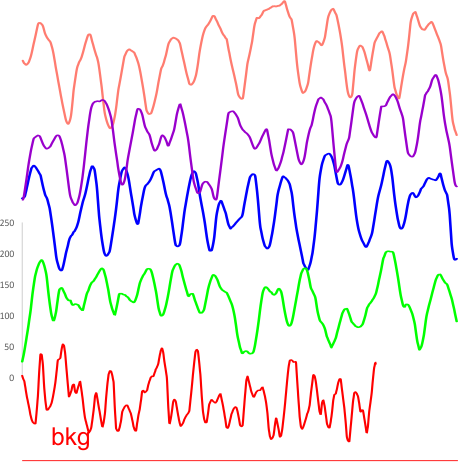Review:Surfactant protein-D and pulmonary host defense Erika C Crouch, crediting John Heuser for this quick-freeze deep-etch image (no bar marker). Respir Res 2000, 1:93–108.
From hundreds of measurements from several published papers, different authors, and using their unprocessed images and ImageJ the estimated arm length of the SP-D in the image below is 128nm, and from that the arm length of DMBT1 is about 192nm.
Four imageJ LUT plots below. The SP-D has recognizable peaks, especially N termini on the left and CRD on the right, even in this etched micrograph. The adjacent image of DMBT1 (same micrograph) shows much less easily defined peaks. Background plot for the image is included beneath each. The irregularity of the SP-D is well known, the regularity of DMBT1 may reflect the string of scavenger receptor cysteine-rich domains. Both these molecules have been visualized by other microscopic methods (shadowing and AFM) which present a much clearer picture of what they look like. Even this early microscopy does validate what has been found more recently. There is an important difference in the arms of SP-D and that is the width of the arms after shadowing which are very thin in the collagen like domain, as opposed to the rest of the molecule, and also compared to the arms of DMBT1 which are many times thicker (because these two molecules are within the same field of the micrograph, one cannot explain it as experimental artifact.

